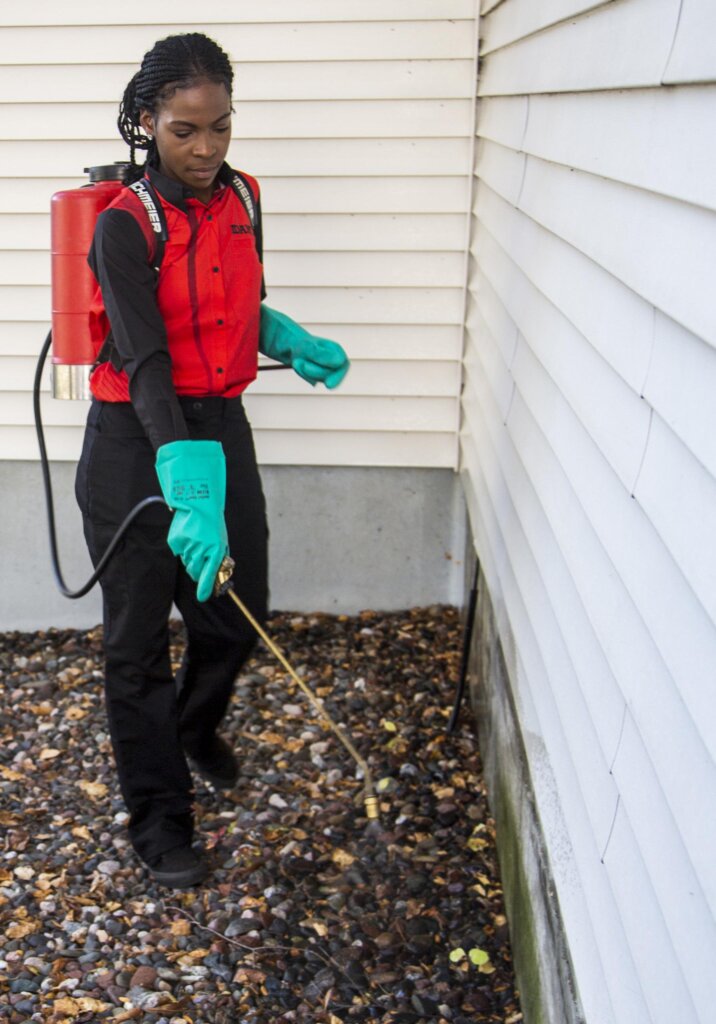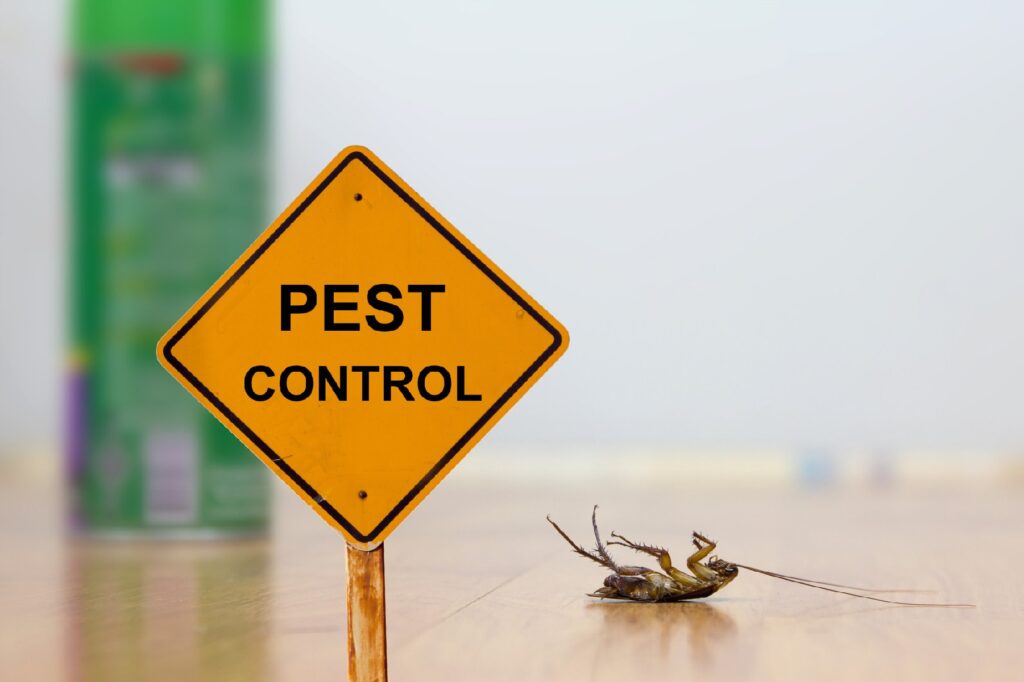Cost Effective A1 Portland Pest Control Bed Bugs - Trusted and Reliable Solution
Cost Effective A1 Portland Pest Control Bed Bugs - Trusted and Reliable Solution
Blog Article
Efficient Insect Control Providers: An Extensive Take A Look At Elimination Techniques and Prevention Procedures
In the world of insect control solutions, the successful management of problems calls for a careful strategy that integrates different methods and measures for both eradication and prevention. From Integrated Pest Management (IPM) techniques that prioritize sustainable services to chemical extermination strategies created for targeted elimination, the toolbox against bugs is multifaceted and vast. Organic control approaches and physical avoidance steps offer alternative courses to effectively combating unwanted intruders. However, the trick to a comprehensive bug control strategy lies not just in the methods themselves, however likewise in the meticulous expert evaluation treatments that precede and notify them. By understanding the ins and outs of each approach and exactly how they interaction, one can truly understand the intricacy and efficiency of modern insect control solutions.

Integrated Bug Management (IPM) Approaches
Integrated Pest Management (IPM) Strategies encompass a comprehensive approach to pest control that focuses on monitoring, control, and prevention approaches to effectively manage pest populaces. By incorporating various techniques, IPM intends to lessen the effect of insects while also lowering the dependence on chemical pesticides. Prevention lies at the core of IPM, stressing techniques like correct hygiene, upkeep of hygiene, and sealing entry points to deter pests from infesting buildings.
Chemical Elimination Strategies
Chemical extermination methods are frequently utilized in pest control solutions to efficiently get rid of pest populations that pose a threat to human health and wellness and residential property. These methods entail using various chemical materials particularly designed to target and get rid of pests such as bugs, rodents, and other undesirable creatures. The application of chemicals, insecticides, rodenticides, and various other chemical agents is meticulously controlled to ensure optimum efficiency while minimizing threats to humans, family pets, and the environment.
Among the key benefits of chemical elimination methods is their capacity to supply fast and targeted outcomes, making them particularly beneficial in instances of severe invasions or immediate pest control requirements - a1 portland bed bug exterminator. Nonetheless, it is necessary to stress the importance of proper handling, application, and disposal of these chemical products to avoid unintended harm
In addition, integrated bug management (IPM) methods usually combine chemical extermination strategies with various other methods such as cleanliness, environment alteration, and biological controls to produce a lasting and extensive bug control approach. By integrating chemical elimination strategies judiciously within an IPM framework, bug control services can efficiently take care of insect populaces while minimizing possible threats to human health and the atmosphere.
Biological Bug Control Methods
Utilizing all-natural killers and parasites to take care of pest populaces is a lasting technique understood as biological insect control. This technique utilizes the all-natural mechanisms of the community to regulate parasite populations without depending on artificial paste control chemicals. One usual organic control approach includes presenting natural enemies of the target pest varieties, such as ladybugs for aphid control or nematodes for termite problems. These all-natural predators prey on the bugs, aiding to keep their populations in check.
One more efficient organic control technique is the usage of microbial pesticides. These are naturally taking place microorganisms, such as infections, bacteria, and fungis, that particularly target and contaminate particular bug types. By making use of these microbial representatives, pest populaces can be properly decreased without hurting valuable microorganisms or triggering harm to the atmosphere.
Physical Insect Prevention Measures
Carrying out physical parasite avoidance actions entails utilizing obstacles and structural alterations to deter pests from going into or infesting a building. Installing door moves, screens on windows, and sealing cracks in the foundation can help stop parasites like insects and rats from getting gain access to indoors.
One more physical prevention procedure view publisher site is the use of obstacles like fencing to keep bigger insects such as deer or raccoons away from the residential or commercial property. Installing mesh or cable displays around gardens can shield plants from being harmed by bugs. Appropriate waste management, including securing wastebasket with tight-fitting covers, is vital in hindering insects like bugs, rodents, and raccoons. By implementing these physical parasite prevention procedures, homeowner can substantially lower the risk of bug infestations and the damage they can create.
Professional Insect Examination Procedures
Carrying out organized and detailed bug assessments is a basic aspect of expert insect administration methods. Expert bug inspectors are educated to meticulously take a look at residential or commercial properties for signs of invasions, determining pest species, entrance points, and helpful conditions. The evaluation procedure normally begins with a thorough assessment of both the interior and exterior of the facilities. This involves monitoring for pest droppings, gnaw marks, nests, and any architectural damages that might suggest bug task. Furthermore, examiners might make use of customized tools such as dampness meters and borescopes to identify surprise invasions within walls or crawl rooms.

Conclusion
In conclusion, reliable parasite control services use a selection of techniques, including Integrated Bug Monitoring approaches, chemical home exterminator elimination methods, biological controls, and physical avoidance procedures. Professional parasite examination treatments play a crucial duty in identifying and dealing with pest issues in a prompt fashion. By applying a mix of these methods, homeowner can effectively avoid and take care of pest infestations.
From Integrated Insect Administration (IPM) strategies that focus on sustainable solutions to chemical extermination techniques made for targeted removal, the toolbox versus pests is large and diverse.Integrated Bug Monitoring (IPM) Methods incorporate a detailed method to pest control that focuses on control, prevention, and surveillance approaches to efficiently manage insect populations.Chemical elimination techniques are frequently employed in parasite control services to successfully get rid of bug populations that position a risk to human wellness and building.Utilizing all-natural killers and bloodsuckers to manage insect populations is a lasting technique known as biological insect control.In verdict, reliable insect control solutions employ a range of strategies, including Integrated Pest Monitoring approaches, chemical elimination techniques, organic controls, and physical prevention steps.
Report this page